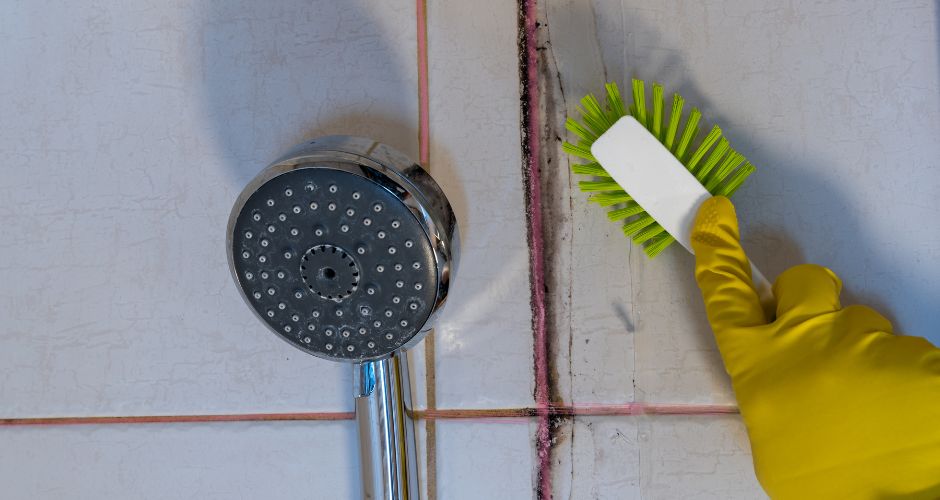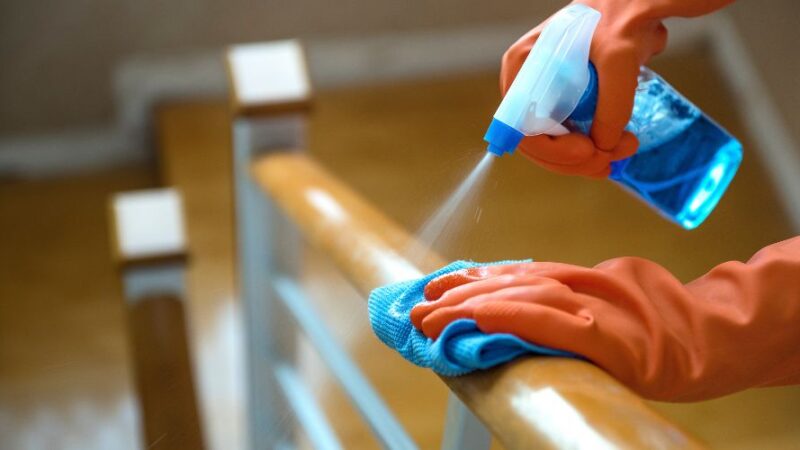What is Pink Mold & How to Get Rid of It

Ever noticed a slimy pinkish stain lurking in your bathroom or kitchen? That’s not just a harmless discoloration—it’s pink mold, a pesky intruder that thrives in damp, humid spaces.
While its name might sound innocent, pink mold can pose serious risks to your home’s cleanliness and even your health if left unchecked.
In this blog, we’ll uncover what pink mold really is, why it grows in your home, and, most importantly, how to get rid of it for good. From identifying its favorite hiding spots to offering simple yet effective cleaning solutions, we’ve got you covered.
Whether you’re dealing with pink mold in your shower or around your sink, this guide will help you banish it and keep it from coming back.
What is Pink Mold?
Pink mold is not a mold but rather a prevalent airborne bacteria found globally. It thrives in dark, damp indoor environments, commonly appearing as a slimy buildup in many households. Interestingly, its color is influenced by room temperature, ranging from orange to bright red.
The bacterium behind pink mold is Serratia marcescens, initially identified in Italy in 1819. Nowadays, it is frequently encountered in bathrooms and other moisture-prone areas. Alarmingly, it contributes to 1.4% of hospital-acquired infections in the United States. Pink mold bacteria nourish themselves on fats present in soap and shampoo residues.

Is pink mold dangerous?
While pink mold, scientifically known as Serratia marcescens, is generally not considered highly toxic, it can pose health risks, especially for individuals with weakened immune systems. Here are some considerations regarding the potential dangers of pink mold:
- Respiratory Issues: Exposure to pink mold can lead to respiratory problems, particularly for individuals who are sensitive or allergic to mold. This may result in symptoms such as coughing, sneezing, and throat irritation.
- Skin Irritation: Contact with pink mold or contaminated surfaces can cause skin irritation in some individuals. Skin redness, itching, or rash may occur upon contact.
- Allergic Reactions: Individuals with mold allergies may experience allergic reactions when exposed to pink mold. Symptoms can range from mild to more severe, including nasal congestion, eye irritation, and wheezing.
- Immunocompromised Individuals: People with compromised immune systems, such as those undergoing medical treatments or individuals with chronic illnesses, may be more susceptible to infections caused by pink mold.
- Hospital-Acquired Infections: Serratia marcescens, the bacterium responsible for pink mold, has been associated with hospital-acquired infections. It can pose a risk in healthcare settings, especially to individuals with weakened health conditions.
How to Get Rid of Pink Mold?

- Protective Measures: Before tackling the cleaning process, ensure your safety by wearing protective gear such as gloves, a mask, and safety glasses to prevent direct contact and inhaling mold particles.
- Cleaning Solutions: Use white vinegar or hydrogen peroxide and water to clean affected surfaces. These solutions are effective in killing pink mold and preventing its return.
- Scrubbing and Wiping: Employ a scrub brush or a cloth to remove the mold from surfaces physically. Pay extra attention to grout lines, tile crevices, and any other areas where the mold may be hiding.
- Ventilation Improvement: Enhance ventilation in affected areas to reduce humidity. Consider using dehumidifiers and fixing any leaks promptly to create an environment inhospitable to pink mold growth.
- Preventive Measures: Regularly clean and dry surfaces, such as bathroom tiles and shower curtains, are prone to humidity. Consistent maintenance will help prevent the recurrence of pink mold.
Pink Mold Locations in the Home
Pink mold, or Serratia marcescens, is commonly found in areas that provide the ideal conditions for its growth—moist, humid environments. Here are some common areas where pink mold is often discovered:
| Area | Location | Removal |
| Bathroom | Shower tiles, grout lines, shower curtains, and other damp surfaces | Regularly clean with a mixture of white vinegar or hydrogen peroxide and water. Scrub tiles and grout lines. Launder or replace shower curtains as needed. |
| Kitchen | Sink drains, dishwasher seals, and areas with water leaks | Keep sink drains clean and dry. Wipe down dishwasher seals regularly. Address leaks promptly. Use cleaning solutions to eliminate pink mold. |
| Household Appliances | Washing machine rubber gasket and drip pans under refrigerators | Clean washing machine gasket regularly. Ensure proper ventilation. Clean and dry refrigerator drip pans to prevent pink mold growth. |
| Air Conditioning Units | Ducts and vents | Ensure proper ventilation. Consider professional cleaning of air ducts. Regularly clean and maintain AC units to prevent moisture buildup. |
| Window Sills | Areas around indoor plants on window sills | Avoid overwatering plants. Promptly wipe down and dry window sills. Improve ventilation to reduce humidity. |
| Carpeting and Upholstery | Moist carpets and damp upholstery | Address water damage promptly. Use dehumidifiers. Clean carpets and upholstery regularly. Ensure proper ventilation to prevent moisture buildup. |
It’s important to note that pink mold is not limited to these areas, and its growth can occur wherever conditions are suitable. Regular cleaning, proper ventilation, and addressing water leaks promptly are key preventive measures to keep pink mold at bay.
FAQ’s
Q: Where does pink mold commonly occur?
A: Pink mold is frequently found in damp areas such as shower tiles, grout lines, sink drains, dishwasher seals, washing machine rubber gaskets, refrigerator drip pans, air ducts, window sills, and moist carpets or upholstery.
Q: Is pink mold harmful?
A: While pink mold is not usually harmful to healthy individuals, it can be a cosmetic issue and may cause allergic reactions in some people. Those with weakened immune systems or respiratory conditions should take extra precautions.
Q: How can I get rid of pink mold in the bathroom?
A: Regularly clean bathroom surfaces with white vinegar, hydrogen peroxide, and water. Scrub tiles and grout lines to remove pink mold. Launder or replace shower curtains as needed.
Q: What about pink mold in the kitchen?
A: Keep sink drains clean and dry. Wipe down dishwasher seals regularly and address any leaks promptly. Use cleaning solutions specifically designed to eliminate pink mold.
Q: How can I prevent pink mold in household appliances?
A: Clean the washing machine rubber gasket regularly and ensure proper ventilation. Clean and dry refrigerator drip pans to prevent pink mold growth.
Q: What measures can be taken for air conditioning units?
A: Ensure proper ventilation and consider professional cleaning of air ducts. Regularly clean and maintain air conditioning units to prevent the buildup of moisture.
Q: What’s the best way to deal with pink mold on window sills?
A: Avoid overwatering indoor plants on window sills. Promptly wipe down and dry window sills, and improve ventilation to reduce humidity.
Q: How do I address pink mold in carpets and upholstery?
A: Address water damage promptly, use dehumidifiers, and clean carpets and upholstery regularly. Ensure proper ventilation to prevent moisture buildup.
Q: Are there any specific cleaning solutions recommended for pink mold removal?
A: A mixture of white vinegar or hydrogen peroxide and water is effective for cleaning surfaces. Additionally, commercial cleaners are designed to eliminate pink mold that can be used according to the product instructions.






